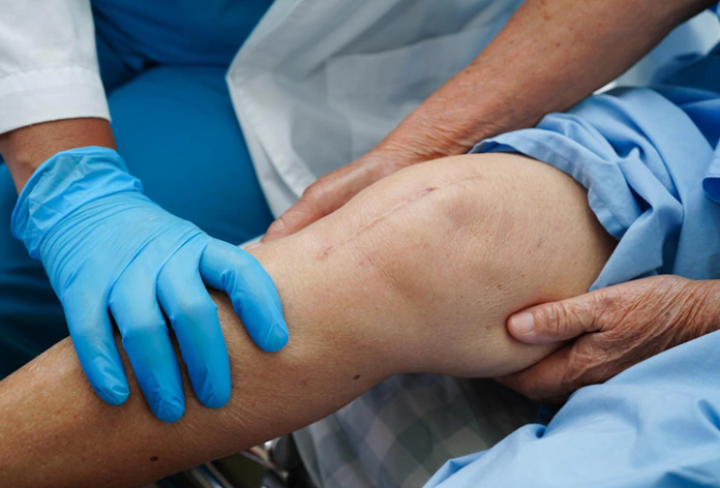Knee replacement surgery involves replacing damaged parts of the knee joint with a prosthesis.
There are two main types:
- Total knee replacement (TKR)
- Partial (unicompartmental) knee replacement
This surgery is often considered when other options for managing knee arthritis have been exhausted.
Indications for Knee Replacement
Knee replacement is typically recommended for individuals with severe knee arthritis causing significant pain and disability. Candidates are usually those who have tried pain management methods like medication, weight loss, and physiotherapy without substantial relief.
The decision to undergo knee replacement surgery is personal and should be made when the individual’s quality of life is significantly impacted.
Reasons for Knee Replacement
Knee replacement surgery is primarily performed to alleviate severe knee pain, improve walking ability, and enhance overall function.
Pain is usually worse when standing on the affected leg and can be particularly intense at night.
Variability of Symptoms
Knee arthritis symptoms can fluctuate from day to day without an obvious pattern. Factors like weather or activity levels might seem correlated, but symptoms can also vary randomly.
Additional Symptoms
Some individuals might experience sensations of grating or grinding in the knee, known as crepitus. While discomforting, crepitus alone does not necessarily indicate a serious knee issue.
Underlying Conditions Leading to Knee Replacement
Osteoarthritis (OA): The most common reason for knee replacement. It can be primary (age-related) or secondary (resulting from other knee damage).
Rheumatoid Arthritis (RA): Less common, but its prevalence is decreasing due to improved treatments.
Other Conditions: Any condition damaging knee cartilage can lead to knee replacement, such as haemophilia, sero-negative arthritis, avascular necrosis, and gout.
Preventing Knee Replacements
Weight loss is the most effective treatment for knee osteoarthritis symptoms. Maintaining a healthy weight is crucial for successful knee replacement outcomes. Other recommended treatments for knee osteoarthritis include general exercise, strength training, water-based exercise, and pain management.
Tests Before Knee Replacement Surgery
Before surgery, a pre-admission clinic assessment is done about six weeks prior. Tests may include blood tests, urine tests, blood pressure measurement, infection screening (including MRSA), and an electrocardiogram. Anesthesia options will also be discussed.
Anesthesia Options
Two main types of anesthesia are available: spinal anesthesia and general anesthesia. The choice depends on your medical condition and personal preference, with spinal anesthesia being more common.
Risks and Benefits
It is important to thoroughly discuss potential surgical risks with your healthcare provider. If you have other medical conditions, these might increase the surgery’s risks. Benefits include pain relief and improved mobility.
Post-Surgery Care
Planning for post-surgery care is crucial. Most people need assistance with daily activities after surgery. Having a support system, whether it is a partner, friend, relative, or even a short stay in a care facility, is important for a successful recovery.
Criteria for Successful Outcome
Research suggests that those who benefit most from knee replacement have advanced arthritis without complete joint destruction. Strong leg muscles are important for optimal recovery, so those with less advanced arthritis often have better outcomes.


